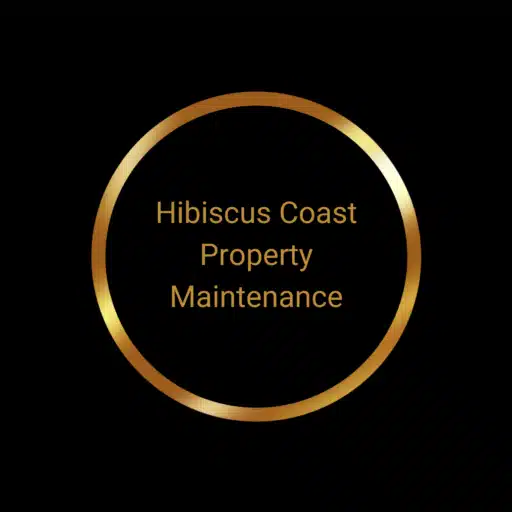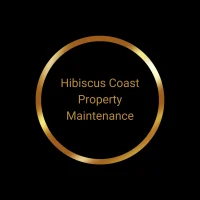
How to Conduct a Building Inspection in New Zealand
Conducting thorough property assessments protects New Zealand homeowners from unexpected repair costs and safety risks. Across the country, where property values continue to climb and housing stock varies dramatically from heritage villas to modern apartments, understanding how to evaluate your building’s condition becomes essential for protecting your investment.
New Zealand’s diverse geography, from coastal locations to mountainous regions, creates specific challenges that demand careful attention during property inspections.
Why New Zealand Properties Require Regular Assessment
New Zealand’s diverse microclimates and geological conditions create distinct challenges for property maintenance. The country’s location in the Pacific Ring of Fire, combined with extensive coastal exposure and variable rainfall patterns, affects buildings differently depending on their specific location. Properties in coastal areas face different challenges from those in inland regions or alpine locations.
With New Zealand’s property prices remaining elevated across most regions, protecting your property investment through systematic assessments makes excellent economic sense. The country’s mix of rapid development in some areas and aging infrastructure in established towns means that both new and older properties can develop unexpected issues. Regular evaluations help identify problems early, when solutions remain affordable and manageable.
New Zealand’s building history has created a mix of construction standards and techniques across different decades. From weather-tight issues in 1990s construction to heritage challenges in older settlements, property owners need to understand their specific building’s vulnerabilities and maintenance requirements.
Assembling Your Inspection Equipment
Effective property evaluation depends on having appropriate tools for the task. Quality equipment ensures you can identify issues that might otherwise go unnoticed until they become expensive problems.
Essential inspection equipment includes:
- Powerful LED flashlight for examining shadowy areas thoroughly
- A safe, stable ladder appropriate for your building height
- Electronic moisture meter for detecting hidden dampness issues
- Quality camera or smartphone for comprehensive documentation
- Comprehensive notebook for systematic record-keeping
- An accurate tape measure for dimension verification
- Appropriate safety gear, including sturdy footwear and protective gloves
Approach your assessment systematically rather than examining areas randomly. Consider this process similar to conducting a thorough medical examination of your property; you’re looking for symptoms that might indicate more serious underlying conditions requiring attention.
Exterior Evaluation: New Zealand’s Diverse Challenges
Start your property assessment by examining external elements, as these components face New Zealand’s varied weather conditions directly. The country’s long coastline, combined with prevailing westerly winds and occasional extreme weather events, creates challenging conditions for building exteriors.
Begin with a foundation inspection, looking carefully for settlement cracks or water penetration signs. New Zealand’s varied geology means different soil conditions across regions—properties on clay may behave differently than those on volcanic rock or alluvial soils. The country’s many sloping sites and earthquake-prone areas can experience unique foundation stresses.
Examine external wall systems meticulously, with particular attention to cladding joints and weatherproofing details. New Zealand’s exposure to driving rain from multiple directions makes weather-tightness critical. For properties with monolithic cladding from the leaky building era, extra scrutiny is essential. Traditional weatherboard homes require careful examination of paint systems and joint integrity.
Roofing assessment becomes particularly important given New Zealand’s weather variability. Different roofing materials perform differently across the country’s climate zones. Concrete tile roofs should be checked for cracking or displacement. Metal roofing requires inspection for fastener integrity and rust development, especially in coastal areas where salt air accelerates corrosion.
Evaluate drainage systems comprehensively. New Zealand’s intense rainfall events, combined with aging infrastructure in established areas, make effective water management crucial. Check that exterior joinery operates properly and provides adequate weather protection.
Roof Space and Structural Assessment
Roof cavities frequently reveal issues invisible from other locations. Many New Zealand homeowners are surprised by problems discovered during ceiling space inspections that have developed undetected over the years.
Systematically examine for water penetration evidence, timber deterioration, or structural sagging. These issues can indicate weatherproofing failure or structural inadequacy threatening building stability. In New Zealand’s older housing stock, particularly in heritage areas, inspect timber framing for borer damage or decay from historical moisture problems.
Assess insulation coverage and condition carefully. New Zealand’s varied climate zones still benefit significantly from proper insulation, particularly given rising energy costs and environmental consciousness. The country’s temperature variations make year-round comfort dependent on adequate thermal performance.
Check ventilation systems for proper operation. New Zealand’s humidity levels can create condensation issues without adequate airflow, leading to mould problems and timber deterioration in roof spaces.
While in ceiling areas, examine visible electrical systems for compliance and safety. Many New Zealand properties contain electrical installations from various decades that may not meet current safety standards.
Internal Room-by-Room Analysis
Systematic internal assessment provides a comprehensive understanding of your property’s condition. Begin by examining wall and ceiling surfaces for crack development, staining, or irregularities that might suggest structural movement or moisture intrusion.
Test all windows and doors for smooth operation. Components that stick or fail to close properly often indicate foundation settlement or frame distortion—common issues in New Zealand’s varied soil conditions and seismic activity. Inspect flooring materials for damage, wear patterns, or unevenness that could suggest underlying structural concerns.
Check all electrical components for proper function. New Zealand’s mix of building ages means electrical systems vary dramatically in age and compliance. Faulty electrical components create safety hazards and can prove expensive to upgrade if problems accumulate.
Assess ventilation and thermal performance in each room. New Zealand’s humidity and temperature variations make proper ventilation essential, particularly in bathrooms and kitchens where moisture problems commonly develop.
Foundation and Underfloor Investigation
Foundation systems provide your building’s structural foundation, yet they’re often neglected during routine inspections. In New Zealand’s variable ground conditions, from coastal sands to volcanic soils, foundation performance can vary significantly between locations.
Access sub-floor areas where possible and examine foundation elements and structural timbers. Look for deterioration signs, pest damage, or structural compromise. Check foundation insulation adequacy; poor floor insulation results in comfort problems and increased energy costs throughout New Zealand’s seasonal temperature variations.
Investigate thoroughly for pest activity. New Zealand’s climate supports various destructive insects that can cause significant structural damage if left unchecked. Ensure adequate sub-floor ventilation exists and check for moisture accumulation. Damp conditions beneath buildings promote decay and create unhealthy indoor environments.
Plumbing and Water System Analysis
Plumbing problems can cause extensive property damage if undetected, and issues often remain hidden until they become serious. New Zealand’s mix of building ages means plumbing systems range from heritage galvanised steel to modern plastic installations.
Test all fixtures for adequate performance and proper drainage. Inconsistent water pressure or drainage problems can indicate broader system issues. Examine areas around plumbing fixtures for leak evidence or water damage; these locations commonly develop problems due to regular use and connection stress.
Evaluate toilet function and check for leak indicators. Water waste from faulty toilets can be substantial over time. Inspect accessible plumbing for deterioration or leak evidence, particularly at connection points where failures typically begin.
Water pressure variations between different areas can stress plumbing systems differently. Properties in elevated locations or rural areas may experience different pressures than those in urban centres.

Documentation and Record-Keeping Systems
Thorough documentation forms the backbone of effective property assessment. Record all observations comprehensively, regardless of their apparent significance initially. Minor problems often indicate developing major issues, and maintaining detailed records enables progress tracking over time.
Photograph all concerns for future reference and comparison. Visual documentation proves invaluable when consulting professionals or monitoring problem development. Create a prioritised action plan based on urgency and potential impact. Some issues require immediate professional attention, while others can be addressed through scheduled maintenance.
Develop a maintenance schedule based on your assessment findings. Preventive maintenance typically costs significantly less than emergency repairs, and systematic scheduling ensures nothing gets overlooked.
Professional Consultation Guidelines
While self-conducted assessments provide valuable insight, certain situations require professional expertise. For property purchases in New Zealand’s competitive market, professional building inspections represent essential due diligence. If you discover significant problems during your assessment, consulting qualified professionals can prevent costly mistakes.
New Zealand has numerous qualified building professionals who understand local conditions and building standards comprehensively. They possess specialised equipment and training to identify problems that might not be obvious to property owners.
The country’s regulatory environment and building code requirements make professional advice particularly valuable for older properties or those with known issues from specific construction periods.
New Zealand-Specific Considerations
New Zealand’s unique characteristics create specific challenges for property owners. The country’s position on the Pacific Ring of Fire means seismic activity affects building requirements and maintenance considerations. Properties in different seismic zones face varying structural demands.
The country’s extensive coastline means many properties face salt air exposure, accelerating corrosion of metal building components. Coastal properties experience different environmental stresses than inland locations.
New Zealand’s varied topography creates diverse microclimates that can affect building performance. Mountain properties face different challenges than coastal or plains locations, whilst properties in high-rainfall areas require different maintenance approaches than those in drier regions.
The country’s heritage housing stock requires an understanding of historical construction techniques and materials. These properties often need specialised maintenance approaches different from modern construction.
Local Weather Impact Assessment
New Zealand’s climate creates specific maintenance challenges that property owners should understand. The country’s maritime climate means weather patterns can change rapidly, testing building weatherproofing systems in diverse ways.
Seasonal rainfall patterns, from persistent winter rain to summer downpours, require buildings to handle diverse moisture conditions. Properties on exposed sites face additional wind exposure that can stress building components.
The country’s generally mild climate can make problems less obvious initially, but the consistent moisture and temperature variations can cause gradual deterioration that becomes expensive if neglected.
How to Conduct a Building Inspection in New Zealand
Comprehensive property assessment requires a dedicated time investment but provides crucial information about your building’s condition. Regular evaluations help identify developing issues before they become costly repairs, protecting both safety and property value over time.
Whether you’re a first-time buyer in a growing provincial centre or managing an investment property in a major city, mastering effective building assessment techniques will serve you well throughout your New Zealand property ownership journey. The country’s diverse conditions and property types make these skills particularly valuable for maintaining your investment.
Alert Building Inspections provides comprehensive building reports across New Zealand with branches in Auckland, Northland, Hamilton, Christchurch, Wellington, Tauranga, Dunedin, and Palmerston North. Trust our expert inspectors to give you clarity and confidence in your property decisions. For professional building inspection services and expert advice, visit our website. You can also read more articles like this on our blog.

Chase Baron is the owner and operator of Hibiscus Coast Property Maintenance, a local, family-owned business that provides a wide range of property maintenance services to residential and commercial customers on the Hibiscus Coast with over 10 years of experience in the industry. We offer a comprehensive range of services, including Painting, Roof Painting, Roof Repair, Gutter Cleaning, Stump Grinding and Tree Services.
